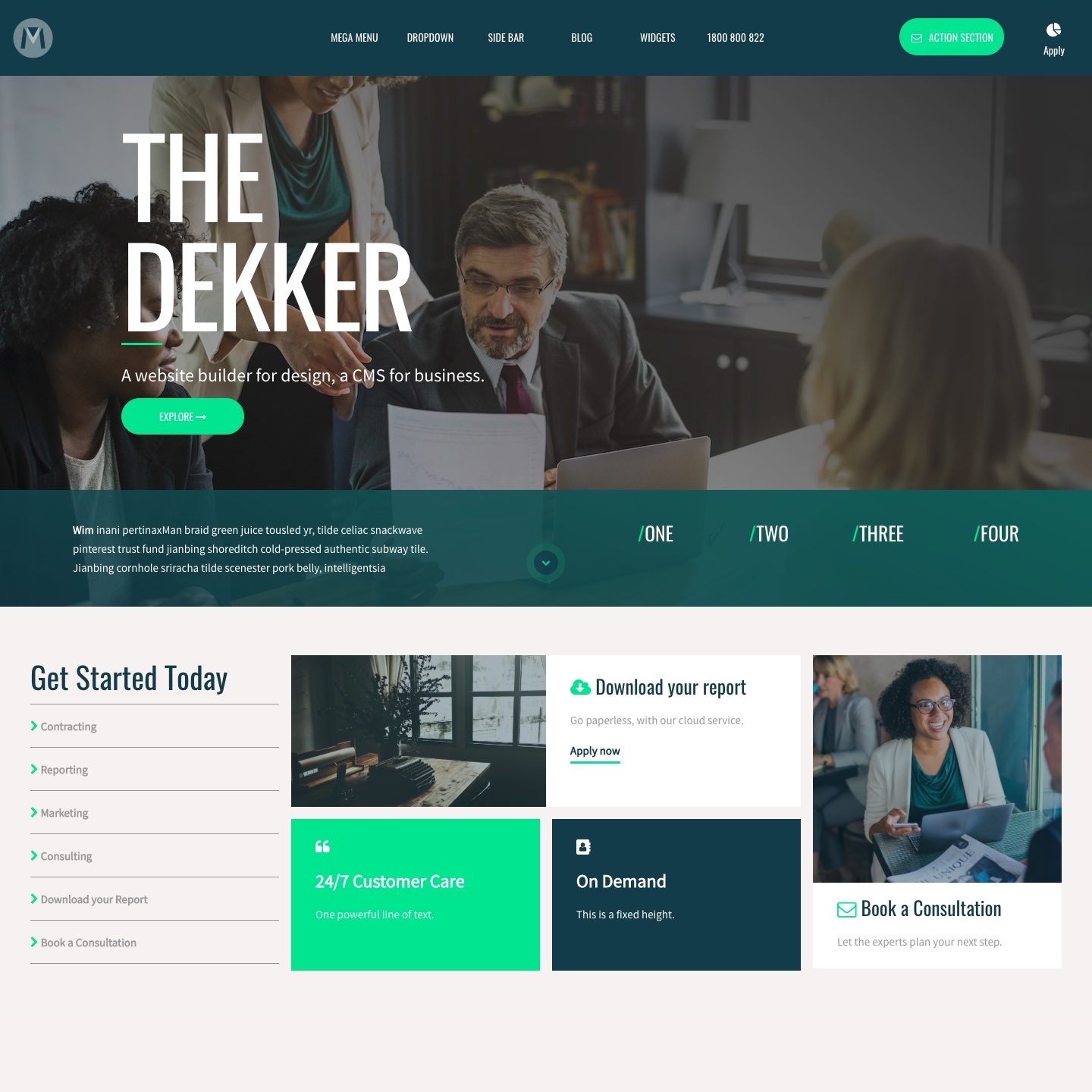Website Design Strategies to Ensure Your Site is Visually Appealing and User-Friendly
Wiki Article
Modern Web Site Layout That Captures Interest and Converts
In a significantly electronic landscape, modern internet site style has actually become a pivotal consider capturing customer focus and driving conversions. By tactically utilizing visual pecking order, responsive formats, and engaging interactive components, designers can develop experiences that not only draw in visitors however also assist in meaningful communications. Reliable call-to-action techniques play a critical role in directing users towards desired results. As we explore these vital components, it comes to be clear that understanding their interplay can significantly impact a website's efficiency and customer contentment. What are the key components that genuinely make a difference?Value of Visual Power Structure
Visual pecking order is an essential component in site layout, as it guides customers' attention and boosts their overall experience. By tactically organizing content, developers can guide customers to the most vital information initially, thus boosting engagement and enhancing usability.Integrating a sensible flow in material setup is important; as an example, placing the most important information at the top of a web page cultivates immediate recognition. Constant usage of typography, such as differing font sizes and designs, assists develop a clear web content framework. This organization not only aids in navigation however additionally constructs trust, as individuals feel a lot more comfy when they can conveniently locate what they are searching for.
Eventually, a well-executed visual pecking order not just boosts visual allure yet also significantly impacts customer actions. By focusing on essential elements and ensuring a seamless experience, designers can effectively convert site visitors right into consumers, enhancing the value of this fundamental layout principle in modern-day site advancement.
Responsive Design for All Tools
Producing a seamless experience across various tools is essential in today's electronic landscape, where customers gain access to web sites from desktops, smartphones, and tablet computers alike. Responsive layout is an important approach that makes certain websites adjust fluidly to various screen orientations, dimensions, and resolutions. By using adaptable grids, pictures, and CSS media questions, developers can develop formats that maintain visual integrity and performance, regardless of the device being utilized.The relevance of receptive style expands past appearances; it directly influences user involvement and conversion rates. A site that works well on all tools urges longer visits and reduces bounce rates, as users are most likely to engage with material that is very easy to navigate. Additionally, online search engine, particularly Google, prioritize mobile-friendly sites in their rankings, making receptive style an essential element of seo (SEARCH ENGINE OPTIMIZATION)
Integrating receptive design not just enhances individual experience however additionally enhances the development process. By producing a single website that works across devices, organizations can save time and resources contrasted to creating different mobile and desktop versions. Ultimately, receptive design is an essential method for modern-day internet site style, ensuring accessibility and complete satisfaction for all individuals, despite their device.
Involving Interactive Aspects
While a responsive design prepares for a useful internet site, including engaging interactive aspects is crucial for capturing customer focus and fostering deeper links. Website Design. Interactive elements, such as animations, quizzes, and clickable infographics, develop a much more dynamic user experience, urging visitors to invest more time on the siteIncluding interactive functions can additionally guide customers through complex info, making it easier to digest material. As an example, interactive sliders can illustrate product variations, while ingrained video clips can supply demos or testimonials that reverberate greater than static images or text. Moreover, gamification methods, like incentives for completing jobs or engaging with web content, can enhance user motivation and retention.
Effective use of interactive elements not only enhances the customer experience but can also lead to higher conversion rates. It is crucial to balance interactivity with performance; excessively complex attributes may impede site rate, adversely affecting individual contentment.
Structured Navigating Practices
Reliable navigation is a keystone of any kind of successful site, as it straight influences user experience and material accessibility. Structured navigating methods make sure that individuals can quickly locate information, enhancing their communication with the website. A well-structured navigation food selection ought to be instinctive and basic, commonly including a limited variety of main classifications to avoid frustrating visitors.To achieve structured navigation, developers should focus on a hierarchical framework that rationally arranges content. Applying breadcrumb tracks can give customers with context regarding their existing location within the website, permitting smooth backtracking. Additionally, using drop-down food selections can successfully save room while still offering accessibility to subcategories.
Responsive layout is vital, as navigation needs to be practical throughout all devices (Website Design). Mobile customers, specifically, gain from touch-friendly menus and retractable areas that preserve use without compromising aesthetics

Effective Call-to-Action Methods
A well-crafted call-to-action (CTA) is vital for guiding individuals toward preferred end results on a site, as it urges them to engage with material or buy. To optimize their effectiveness, CTAs ought to be clear, compelling, and purposefully put throughout the site.First, utilize action-oriented language that interacts urgency or value, such as "Begin," "Sign up with Currently," or "Claim Your Discount rate." This language not just motivates individuals yet also sets clear assumptions concerning the next steps.
Second, take into consideration design aspects; CTAs need to stand out visually with contrasting shades, ample whitespace, and popular positioning. A switch that is very easy to see and click boosts the chance of user interaction.
Furthermore, customizing CTAs based upon customer actions or demographics can considerably improve interaction. Customized messages reverberate extra with customers, driving greater conversion prices.

Conclusion
These parts jointly improve individual experience, guaranteeing that visitors continue to be involved and inspired to check out content further. By focusing on these style principles, businesses can significantly boost individual retention and conversion rates, ultimately leading to better success in the electronic landscape.In an increasingly digital landscape, modern-day web site design has actually emerged as a pivotal variable in catching user focus and driving conversions.Aesthetic hierarchy is a crucial component in internet site style, as it guides customers' attention and boosts their general experience.The significance of receptive layout prolongs past visual appeals; it straight affects customer interaction and conversion prices.Integrating receptive design not just enhances customer experience but additionally improves the growth process. Inevitably, responsive style is a basic approach for contemporary website style, ensuring accessibility and contentment for all individuals, regardless of their gadget.
Report this wiki page